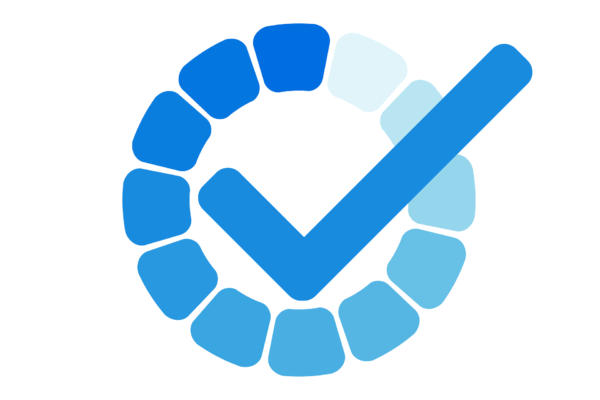Your Guide to Delivering On Quality of Hire

Quality of Hire is a metric that consists of a plethora of meaningful measurements – often unique to each business and role – that has the ability to measure the success of quality hires and employee retention.
The goal of Quality of Hire is to optimize the hiring process and performance of Talent Acquisition in order to improve business outcomes such as revenue, cost savings, productivity, and post-hire metrics.
Having a comprehensive Quality of Hire program can help drive job performance results and has the potential to become one of the most powerful tools in an organization’s talent tool belt.
Why Measure Quality Of Hire?
 Quality of Hire is perhaps one of the most important factors relating to a company’s long-term success and efficiency. It essentially defines a company’s effectiveness as a whole, through the caliber of its employees.
Quality of Hire is perhaps one of the most important factors relating to a company’s long-term success and efficiency. It essentially defines a company’s effectiveness as a whole, through the caliber of its employees.
By securing great rates of Quality of Hire, companies are making sure they are building an effective team, reducing wasted time with candidates that are poor fits for their culture, and ensuring that the people they onboard will contribute to increasing productivity.
What Affects Quality?
Most companies focus on measuring hiring quality through statistical means such as the percentage of completions per source type or applicant tracking system data (i.e., time-to-hire.) It’s all about finding the right talent to fuel the company and its needs. Really, the hiring process entails multiple components that are key to successful outcomes.
Individuality: It’s quite clear that no single business or position can define success for another. For example, the quality measurements used by an organization’s designers will greatly vary from the measurements used for a sales team.
Measurements: You want to be able to quantify factors that actually play a role in the organization’s prosperity. This may involve data and metrics such as retention rates, time, and productivity.
Definition Of Success: At the end of the day, the data a business measures should be related to its concept of what makes up a successful hire. A clear and precise understanding of what a person in a given role should be achieving or contributing to an organization is paramount for hiring processes that result in manager satisfaction.
Implementing The Process

To convert data into a truly useful tool for measuring the Quality of Hire metrics, begins with this basic question: “How does our company view and define success?” Ultimately, this is the perspective through which a business can best decide on what data to measure quality, based on its value to its business goals.
With this in mind, data can be collected and turned into information that helps drive business decisions. Arriving at a point at which your organization is actually ready to measure its overall quality and actively benefit from it certainly doesn’t come without effort.
In fact, many companies are likely to face challenges along the process. These obstacles tend to be similar across the board as well.
Top Two Commonly Faced Problems
Organizational And Cultural Needs Aren’t Well Defined
A lack of transparency about the desired attributes, skills, and behaviors for a given role can make it difficult for a hiring manager to assess cultural fit and long-term viability in terms of employment. This may be addressed by having a clear job description, performing an accurate job analysis & setting up a fair and transparent recruiting process for all new hires.
Expectations Aren’t Clear
Many employers are not clear about the types of attributes, skills & behaviors they are looking for in a candidate. This can result in an employer sifting through large numbers of resumes and interviewing candidates who may not meet their criteria.
 Solutions to these problems include using technology such as video-based interviews, third-party assessment tests, behavioral-based questions, and investing in training programs that train hiring managers on how to interview and assess candidates.
Solutions to these problems include using technology such as video-based interviews, third-party assessment tests, behavioral-based questions, and investing in training programs that train hiring managers on how to interview and assess candidates.
In general, these challenges tend to arise from companies that try to evaluate their entire workforce as a whole. Instead, many may benefit from reviewing only the highest-priority roles within their company, such as the greatest revenue generators.
Working with hiring managers and senior executives to develop consistent and agreed-upon criteria can help keep the procedure under control by ensuring that only the most significant and beneficial information is involved, to increase hiring manager satisfaction.
Quality Assurance
It is also crucial to completely comprehend who specifically should be held responsible for integrating Quality of Hire into a company. Individuals such as senior leaders, talent management, and acquisition and hiring managers all play integral parts in implementing the correct processes.
While there is no magic formula for ensuring good Quality of Hire that will work in every organization, a few primary areas can be monitored and emphasized to improve the quality of hire metrics.
Employee Value Proposition
The primary message a new hire receives about your company, aside from your public brand, is their Employee Value Proposition (EVP.) Smart EVPs will entice the new hires that you want while repelling those who are not a good match.
The correct message will generate an emotional response among your target audience and highlight features of difference that encourage them to work for your firm rather than someone else’s.
Workforce Planning
Cost of turnover, workforce stability, workforce capacity, turnover rate and reason, voluntary termination by top performers, and key position turnover rates are some of the metrics used to evaluate employee performance reviews. Consider collecting data on new business growth, physical work location, offshoring, economic trends, retirees, and knowledge transfer to build a better picture of your workforce quality.
Keep in mind, that there are software tools available to help you track these indicators, such as human capital forecasting and retention diagnostics. Understanding this data may assist you in predicting future talent requirements.
All essential talent management techniques consist of strong succession planning, bench strength evaluations, human capital metrics year over year, current and future organization charts, special emphasis areas, employee profiles, and action plans.
To ensure that you are achieving your highest level of business success, it is important to use these tactics to measure qoh effectively.




